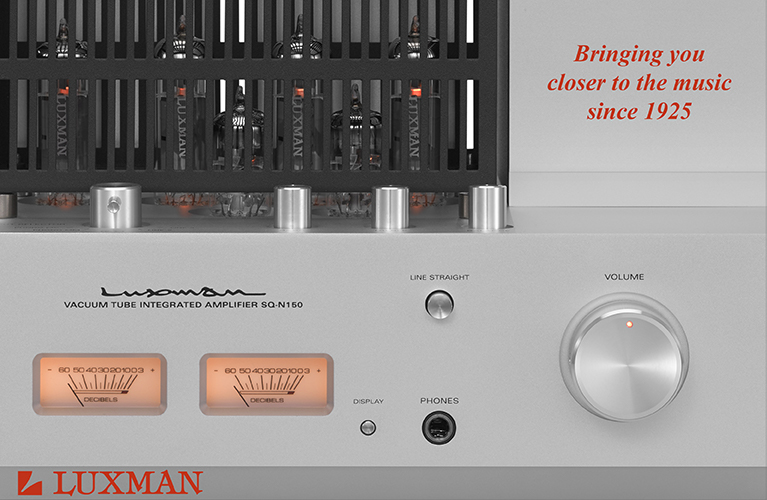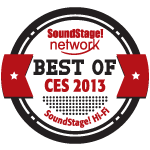
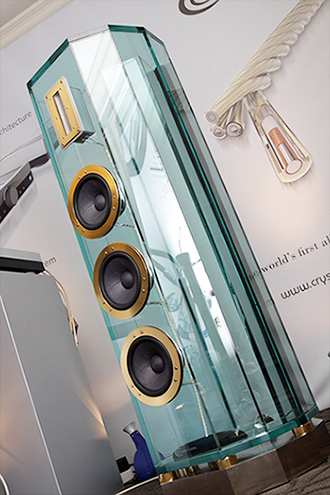 The 2013 edition of the annual Consumer Electronics Show (CES) ran January 8-11 in Las Vegas, Nevada. We had a five-man SoundStage! Network team there to cover it, delivering on-the-spot updates to the world through our SoundStage! Global site. That coverage included 14 feature articles, but none of them discussed what I thought were the best products and systems at the show. I saved that for this article.
The 2013 edition of the annual Consumer Electronics Show (CES) ran January 8-11 in Las Vegas, Nevada. We had a five-man SoundStage! Network team there to cover it, delivering on-the-spot updates to the world through our SoundStage! Global site. That coverage included 14 feature articles, but none of them discussed what I thought were the best products and systems at the show. I saved that for this article.
Best products
A few years ago, Crystal Cable, of the Netherlands, pulled off a corporate miracle by successfully transforming themselves from a manufacturer of audio cables into a maker of high-end loudspeakers as well. Furthermore, they did it with a speaker design that most people thought could never work: the all-glass Arabesque ($65,000 USD per pair). The Arabesque pretty much took the audio world by storm. Its combination of great sound with luxurious build quality and unique styling resulted in something the world had never seen before -- until January 2013.
Crystal Cable unveiled the Absolute Arabesque at CES 2013. It features new wiring from their top line of cables, Absolute Dream (hence the speaker’s expanded name), newer versions of its drivers, and an improved crossover. At $95,000/pair in the US, the Absolute Arabesque costs considerably more than the standard model (which remains in production), largely due to the more expensive wire. For us regular wage earners, the Absolute Arabesque is something to behold, admire, and, at events such as CES, enjoy -- the pair I heard sounded remarkably good driven by sister company Siltech’s new SAGA amplifier system.
If you want styling and performance but don’t have a fortune to spend, look to Italy’s Sonus Faber, who showed some of the most-talked-about speakers at CES: their new Venere series, which starts at about $1200/pair for the stand-mounted 1.5, and tops out at about $3500/pair for the floorstanding 3.0. Gorgeous speakers at reasonable prices.
Like Crystal Cable, Sonus Faber has performed a sort of miracle with the Veneres. Early in 2012, when talk was first heard of a lower-cost Sonus Faber line, the company was severely criticized by some when it was revealed that they planned to have the speakers made in China. How could so well-known and decidedly Italian a brand do that? I, too, had misgivings. And how could they overcome the negative publicity of all that criticism?
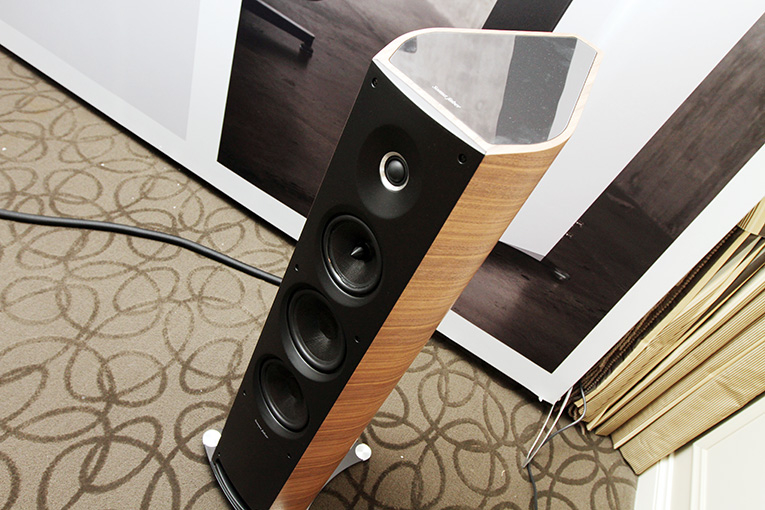
Well, they have -- and remarkably well, thank you very much. The Veneres are indeed made in China, and the results are nicely built, exceptionally well finished, exquisitely styled loudspeakers that scream high value, high style, and, most important, high performance. What’s more, they look like speakers that come from Sonus Faber, not at all from the Far East, meaning that the Italian company’s seemingly risky move to Chinese manufacture will undoubtedly pay off.
Sandy Gross has been called the most successful “speaker man” ever -- he cofounded Polk Audio, Definitive Technology, and GoldenEar Technology. What’s his secret for success? I can’t be 100% sure, but I think it has to do with understanding the marketplace well; in particular, the notion that more people can afford speakers priced closer to $1000 than $100,000.
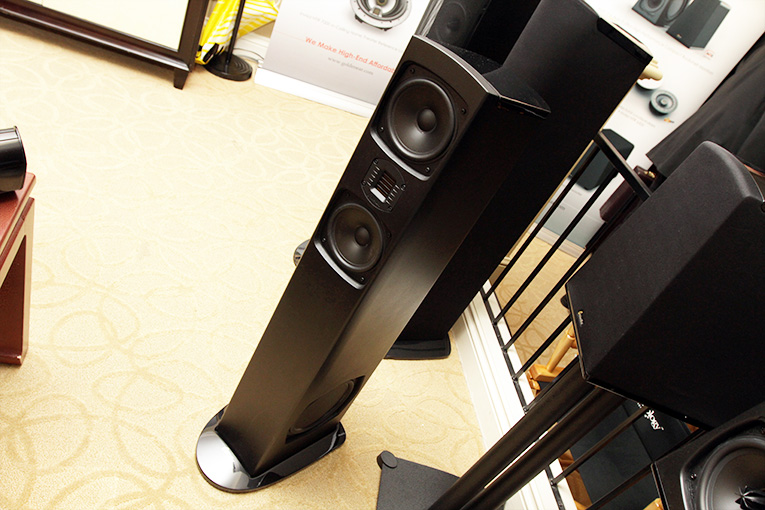
Gross used CES 2013 to launch a wonderful-sounding new floorstander that gets mighty close to that $1000/pair ideal, which is usually what high-quality bookshelf models cost. It’s called the Triton Seven, and it costs $1400/pair. Inspired by GoldenEar’s larger Triton Two and Triton Three models, the Seven lacks their powered bass sections, which is one of the ways Gross keeps its price way, way down. Yet they didn’t seem to sacrifice much in the way of sound by eliminating the bass amp -- this small speaker sounded remarkably full in the low end, and pretty darn neutral through the midrange and highs. But that’s all I’ll say for now -- see below for more details about GoldenEar’s rather special room at CES.
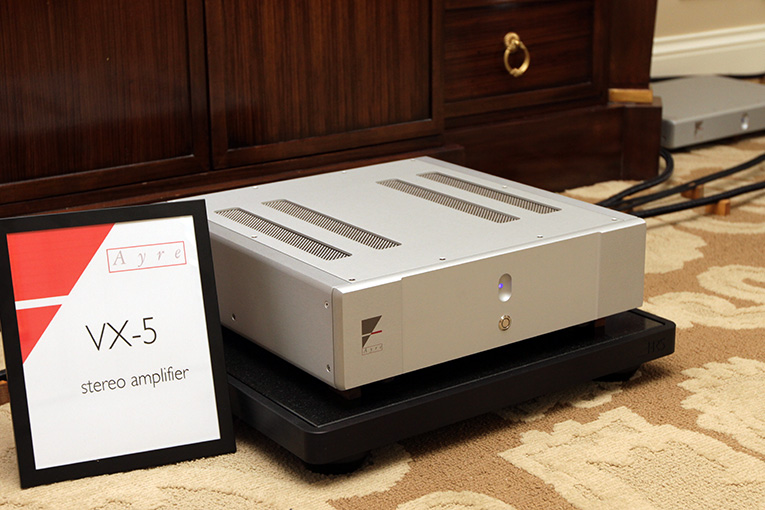
I wrote an entire feature story on one new amplifier at CES, so I won’t write much more about it here. Ayre Acoustics’ VX-5 stereo amp is claimed to deliver 175Wpc into 8 ohms or 300Wpc into 4 ohms, and two things about it are worth highlighting here: First, the VX-5 brings the sound of Ayre’s R-series models, the VX-R ($15,000) and MX-R ($20,000), down to a more affordable $8000. Second, it’s superbly built and styled. For audiophiles who want a cost-no-object amp but can’t afford a five-digit price, such a product is a godsend.
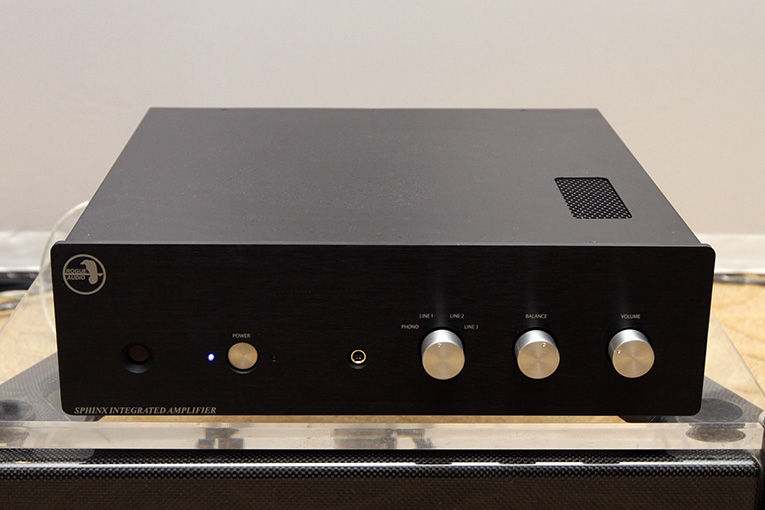
But if $8000 is still way too rich for your blood, there’s a nifty integrated amp that caught my eye: Rogue Audio’s Sphinx ($1295). What’s cool about the Sphinx is that its input stage is based on tubes, the technology Rogue is known for, but its output stage is class-D. This allows the Sphinx to deliver high power output (100Wpc into 8 ohms). It has all-metal casework, a headphone amplifier, even a phono stage. The whole thing is made by Rogue in the US of A, so consider them a homegrown talent (if you’re from the US). Jeff Fritz wrote two “Virtual Systems” features while at CES, but if I had my way there would have been three, the third one involving the Rogue Sphinx paired with either of Sonus Faber’s Venere models or GoldenEar’s Triton Seven, to create a superb budget system.
The all-tube amp that most impressed me was one that was shown at CES, but that we didn’t cover because we’d already reported on it from TAVES in September: Focus Audio’s Liszt Sonata ($12,000). Still, it deserves inclusion here -- it’s one special little amp.

One of the things that impressed me about the Liszt Sonata was that it sounded really good driving a pair of Focus’s FP88 SE loudspeakers (a dCS Puccini digital system spun CDs up front) -- I mean, really good. But I was equally impressed when I learned where and how it and the Liszt Prelude ($7800), which is basically a Sonata with scaled-back components, are being built. In 2011, when the Focus folks told me they were getting into the amp business, I winced -- I figured they’d simply farm out designs to someone else, perhaps a Far East firm, as so many do, and slap their name on the front and rear panels. Little did I know that Kam Leung, Focus’s president and chief designer, is an accomplished electrical engineer who knows a thing or two about designing tube amps. Moreover, they made a pact to build their amps entirely on their home turf, Canada, using local vendors and suppliers. The only things that can’t be made or sourced locally are the tubes.
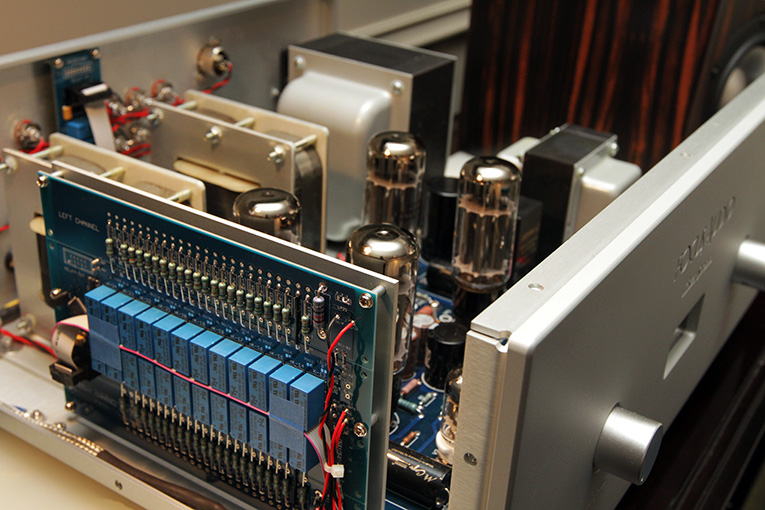
Focus does all the assembly and an appreciable amount of the circuit work in their Toronto factory. For example, the nifty volume control, its resistors laid out so neatly on a flat circuit board (see above), is soldered by hand by Kam Leung himself. Color me impressed. Jason Thorpe has a Liszt Sonata in for review; I can’t wait to read what he has to say about it.
The last amp I’ll mention put a smile on my face: Vandersteen Audio’s M7-HPA mono amplifier, estimated to retail for $30,000-$40,000/pair when released later this year. I smiled because of the way it looked -- kind of like Vandersteen’s Model Seven loudspeaker, right down to the color of the top of the case, which can be matched to the speaker. Cute. The M7-HPA has a tubed input stage and a solid-state output stage, both designed by Richard Vandersteen, along with some neat features, such as a cooling pipe and a suspension system, that Vandersteen told me Mike Latvis, of Harmonic Resolution Systems, helped him design.
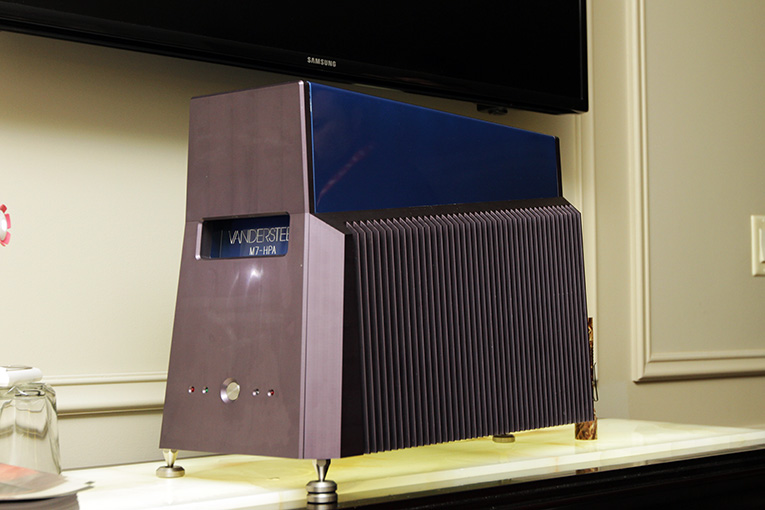
Vandersteen’s creation of the M7-HPA made sense when he told me about another wrinkle in the design: it’s a high-pass amplifier designed to work from 100Hz up. Although the M7-HPA can be used with almost any speaker with a powered bass section, its obvious mate is Vandersteen’s own Model Seven -- hence its matching appearance. Smart idea? You betcha! Many of Vandersteen’s buyers are more than just customers; they border on being disciples of his obsession with time alignment. My bet is that any Seven owners who didn’t know about the M7-HPA until reading this are now thinking of selling whatever amps they own, and that many who saw it at CES already have.
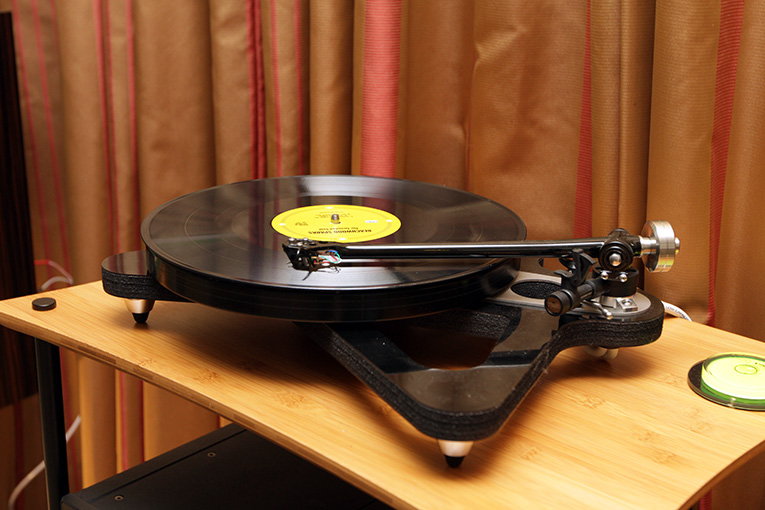
No digital source at CES 2013 impressed me as much as a certain analog one: Rega Research’s RP8 turntable. I liked its styling and high-tech features (the foam material used to damp vibrations is novel), but what I most liked is that it’s a high-quality design that costs $3995 including tonearm and cartridge, and is designed to be unpacked, set up, and playing music within 20 minutes. While speed of setup isn’t important to everyone, it is for those of us who aren’t into the nitpicky details required by many turntables, but are into playing our LPs with as little fuss as possible. As I wrote at CES, the RP8 embodies analog made easy.
Best systems
CES is a very big show -- it’s next to impossible to hear all the systems displayed in any given year. It’s doubly hard when you do the kind of product-based reporting we do at shows: lots and lots of pictures to take and captions to write. I didn’t listen to all the products I wanted to hear this year, but of those I heard, the following four systems stood out.
Magico had speakers showing in some eight rooms, but the system that most impressed me was centered around their new S1 ($12,600/pair), which, though certainly not cheap, is the company’s least expensive speaker yet. Up front were a Constellation amp and preamp, a proprietary music server that Magico’s Alon Wolf likes to tempt audiences with (he says he’ll never sell it), a Pacific Microsonics DAC, some MIT cables, and a rack of Magico’s design.
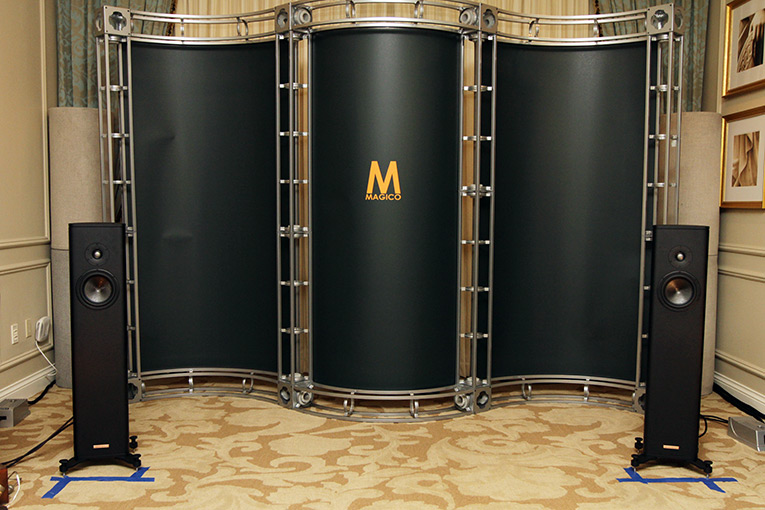
The S1 is a compact, two-way floorstander with a 7” woofer married to a 1” beryllium-dome tweeter, so you can’t expect 20Hz bass from it, or that it will charge up a really big room the way Magico’s bigger models do (the S5, Q5, and Q7). But the S1 did sound notably fleshed out in the low end, ultradetailed from the lowest notes it could hit right up through the highs, and quite neutral, the last a quality that’s long been a hallmark of Magico designs. And while the S1 probably isn’t intended for use in very large rooms, it did work very well in Magico’s good-size room at CES. (The beefy 250Wpc Constellation Centaur amp behind the pair probably helped; the speakers never hinted at sounding strained.) This system was one of the best sounds I heard at CES 2013.
GoldenEar’s room was a combination of the weird and the wonderful. First, the weird: Company founder Sandy Gross showed the new Triton Seven speaker ($1400/pair), which I wrote about above, with a rack full of Audio Research and Pass Labs gear that retailed in the tens of thousands of dollars, all strung together by Cardas and Clarus wires that added thousands more to the system price. I figured there might be a couple of reasons for all this excess. First, because some high-enders thumb their noses at lower-priced receivers, integrated amplifiers, and separates, components like these give street cred to systems such as this. Gross wanted to ensure that serious audiophiles would sit down and listen to his most affordable floorstander yet. Another reason could be that he simply wanted to have his new speaker sound as good as possible.
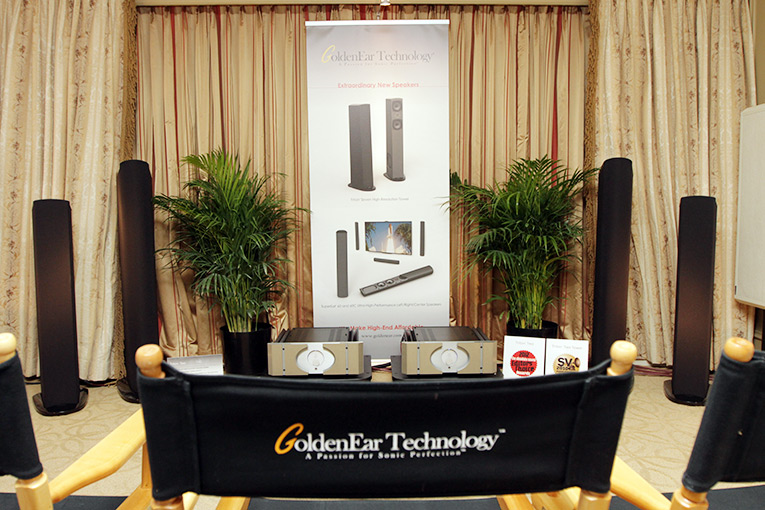
Whatever the reason, the Triton Sevens sounded surprisingly full in the bass, exceedingly neutral through the mids and highs, and more refined overall than many speakers at CES costing many times their price. They also imaged like champs, creating one of best soundstages of the show -- it completely enveloped their side of the room in a huge wash of sound. Given the Seven’s price, it was hard to ask for more -- other than for review samples when they’re released toward the middle of this year. If the Sevens perform anywhere near as well with lower-priced electronics as they did with the high-priced stuff in Vegas, they may be one of the year’s best speaker values.
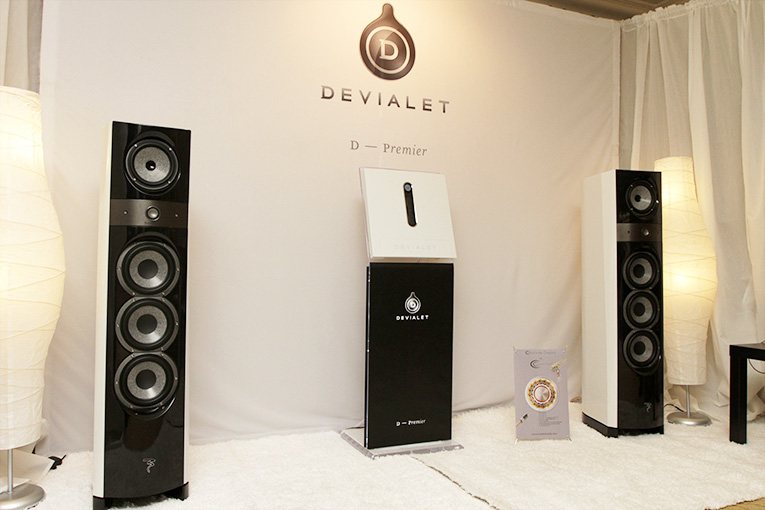
I was bowled over when I heard a pair of Focal Electra 1038 Be speakers ($13,000/pair) driven by a Devialet D-Premier ($15,995) in the room of Audio Plus Services, the North American distributor of both brands. I’d heard other Focal speakers unravel plenty of detail, but I’d never heard any that sounded as natural, effortless, and refined as the Electra 1038 Bes. The system was wired with Crystal Cable (also distributed by Audio Plus), and an iMac served music files. I wrote about this system while at CES, in an article that focused on the attractive appearance of the display, but it’s important to point out that this wasn’t a case of looks over sound; the system sounded every bit as good as it looked, and was a prime example of the kind of simplicity that can be achieved with no sacrifice of performance -- so long as you have an all-in-one component like the D-Premier.
The best sound I heard at CES 2013 was from a pair of Vandersteen Model Seven speakers fronted by a Harmonic Resolution Systems rack full of Aesthetix electronics and topped by a Brinkmann Balance turntable. AudioQuest’s WEL cables were used throughout. The Sevens cost $48,000/pair, and the rest of the stuff probably came to about $150,000. It was a pricey system -- and a superb one.
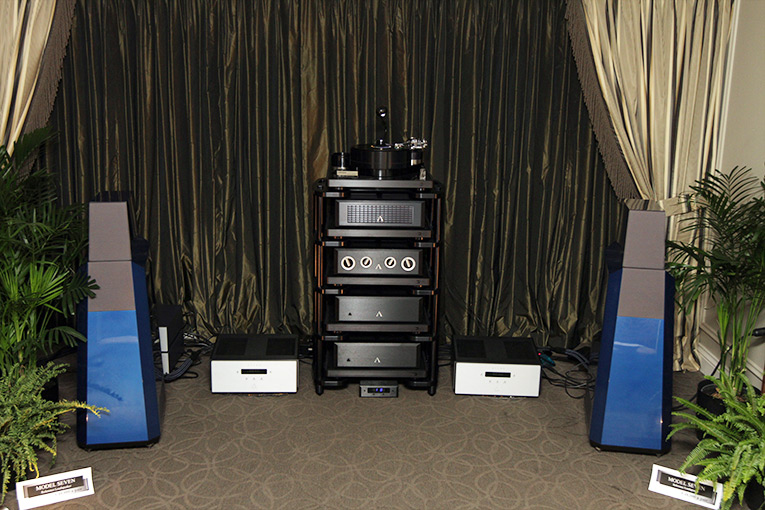
The sound was exceptionally rich without being too robust or full, and was extremely detailed. The speaker end of the room overflowed with a soundfield that extended past the speakers’ outer edges and beyond the front wall. Huge! Bass notes went exceedingly deep without booming, which indicated that Vandersteen had tuned the bottom end just right. This system’s sound, while on the warm side of neutral, was nothing short of spectacular; it was unsurpassed by any other I heard at Vegas this year.
With CES 2013 now behind us, the next audio event to look forward to is Salon Son & Image, in Montreal, Quebec, Canada, to be held March 21-24. Not only will the SoundStage! Network cover it on SoundStage! Global, but we are also sponsoring the event. Perhaps we’ll see you there.
. . . Doug Schneider
das@soundstagenetwork.com






















